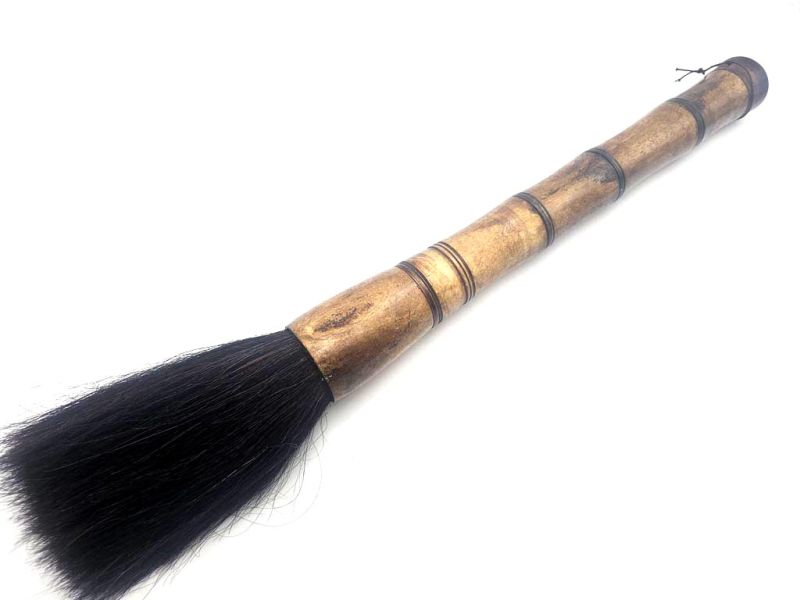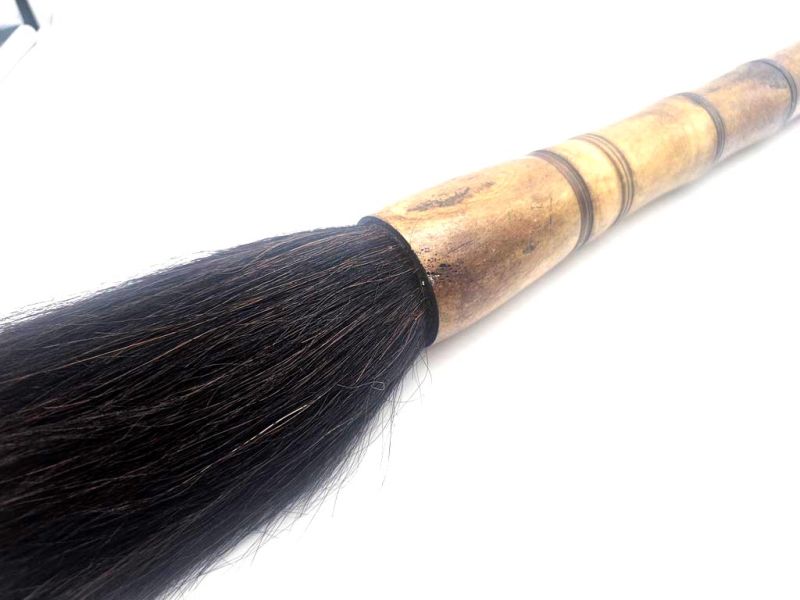Chinese Buffalobone Brushes – Elegance and Heritage of Calligraphy
Chinese Buffalobone Brushes:
- Chinese calligraphy brush with a buffalobone handle, finely polished and assembled by specialized artisans. Each piece, the fruit of millennia‑old craftsmanship, serves both as a writing tool and as a standalone work of art.
- Also known as the “wash brush,” it is one of the Four Treasures of the Scholar – brush, ink, inkstone and paper – symbols of the importance of calligraphy in Chinese culture since antiquity.
- According to tradition, a high‑quality brush must possess four virtues: Sen (fine tip), Ken (balanced hairs), Sei (aligned hairs) and En (flexibility and ease of movement).
- The origins of this instrument date back more than 4,000 years: the brush is indeed a Chinese invention, and calligraphy is regarded there as the noblest of the arts.
Chinese Culture:
- Calligraphers use this brush on rice paper or silk, a fragile but noble support. The practice, initiated more than 3,000 years ago, carries the legacy of Cang Jie, the legendary inventor of Chinese characters.
- To obtain fluid ink, one rubs an ink stick on an inkstone, adding the necessary amount of water; the balance between water and powder is essential for line quality.
- Six main styles exist: Jia Gu Wen (bone inscriptions), Zhuan Shu (seal script), Li Shu (clerical script), Kai Shu (regular script), Xing Shu (semi‑cursive) and Cao Shu (cursive). Each reveals a different facet of the calligraphic art.
Chinese Decoration:
- While fully functional, this brush also asserts itself as a refined decorative object: placed on a stand, hung or framed, it enriches any interior with a touch of Asian authenticity.
- Ideal for collectors and lovers of Chinese art, it fits harmoniously into a cabinet of curiosities or a Fine Arts library.















